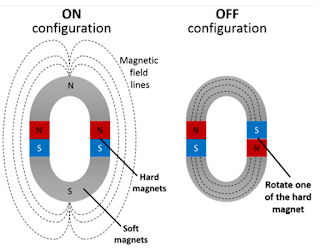Programmable Materials
Hello and welcome to Meta Monday
Today we’ll see
· What are they
· A brief History
· The idea
What are they
Yes, it is just like it sounds, materials that can be programmed to behave in a specific way (i.e., it has the ability to change its physical properties like shape, density, conductivity etc.) under certain conditions like temperature, pressure, etc.
A brief History
Toffoli and Margolus coined the term ‘programmable matter’ originally in 1991 to refer to a group of very small computing elements arranged in a particular way. Then as semiconductors, nanotechnology advanced, it gave way to a broader class of materials, to include not only those which can be arranged spatially but can also change their properties in a predetermined way. Then in 2002, the Claytronics project was started at the Carnegie Mellon University. The Self- Assembly Lab at MIT, US was also founded to work on and develop programmable materials
The Idea
The Natural characteristics of a material are considered to see how and how much it can be programmed. Energy is required to activate the transformation. To get precise and programmable transformations in a material, the structure must be created in such a way that it responds to the energy activation in the required way only. Energy sources include pressure, light, moisture, temperature, vibration and electricity.
One of the examples is using cellulose and its property of expanding when it gets wet. Wood veneer will curl when wetted. So, the curling can be designed to curl in a specific way. The structure of the material, that is the direction of grain dictates how it transforms. The scientists at the Self-Assembly Lab have figured out a way to custom print wood grain by taking saw dust and plastic and combining it into a filament and extruding or forcing it out. In this way they can design the direction of the grain, which then can be activated by moisture to produce useful, repeatable transformations like folding, curling etc.
They even have a way to program textiles which makes them stretch in a particular way. For example, they made a prototype table, and a stretch textile was bonded to the wooden frame
Another way to do programming material can be electropermament magnets. It is a magnet consisting of both an electromagnet and a permanent magnet. The magnetic field of the electromagnet is used to change the magnetic field of the permanent magnet.
Finally, another approach to programmable materials id claytronics. If you’ve ever seen the movie Big Hero 6, then you know about microbots. Claytronics is just that. Many micro-scale computers or ‘Catoms’ which can communicate with other bots, move around, attach and detach electrostatically are used to form macro-scale objects of different shapes and varied utility.
https://www.mdpi.com/2076-0825/9/2/43/htm
To conclude, the field of programmable matter is an extremely promising, interesting and potentially has tremendous applications in almost every field of human life. They are on the way, but once they are here, they will revolutionize the world.
Blog Credits:
Adityan Arumuganainar (FY Manufacturing 112113002)
References –
https://ideas.ted.com/a-peek-into-the-brave-new-world-of-programmable-materials/
https://en.wikipedia.org/wiki/Programmable_matter#Electropermanent_magnets
https://selfassemblylab.mit.edu/programmable-materials




Comments
Post a Comment